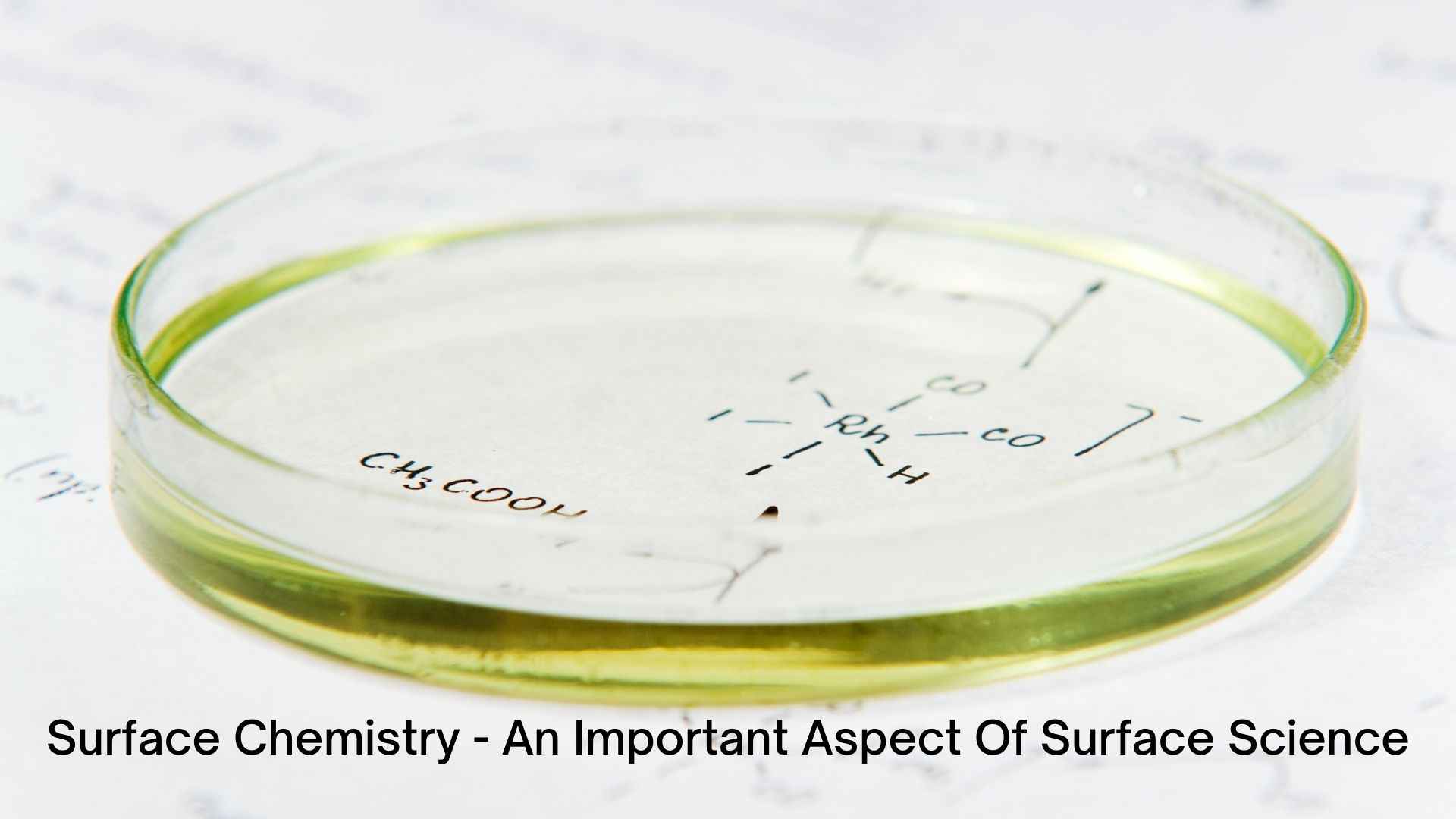“The surface was invented by the devil,” were the words of Wolfgang Pauli, a theoretical physicist. He probably said that to explain the complexity and difficulty of studying a material’s surface.
Contents
What Is Surface Chemistry & Definition Of Surface/Interface?
The simplest explanation that can be given to the surface is the boundary at which the atoms of one material interface and communicate with the atoms of other material. Through the points mentioned below, we have attempted to define surface chemistry more.
- Surface chemistry is a branch of surface science besides surface physics.
- It deals with the study of all the chemical phenomena that occur at the surface or interfaces.
- A surface or an interface defines a barrier between a material and its external environment and also influences interactions between them.
- The interface can be between two phases like solid and gas and can be represented as solid/gas or solid-gas. The other types of interfaces are between liquid and gas, solid and vacuum etc. There is no interface between gas and gas due to complete miscibility.
Surface Chemistry – An Important Aspect Of Surface Science
- The phases that we commonly get to observe are compounds or solutions. Depending on the kind of phase, the interfaces can differ in their size.
- Surfaces and interfaces are favourable for chemical and biological processes in nature along with technological applications.
- A lot of interesting phenomena occur at the interface level. For instance, adsorption, corrosion, catalysis, heterogeneous catalysts, dissolution, crystallisation etc.
- The knowledge of surface chemistry is useful in industries, analytical work and even our daily life.
Furthermore, get notes on Organic Chemistry from experts to boost your concepts and understanding.
Who was Irving Langmuir & His Contribution To The Development Of Surface Chemistry?
- The major development of surface chemistry occurred during the first four decades of the last century.
- The major contributor was Irving Langmuir, an American chemist, physicist, and engineer.
- In 1932, he won the Nobel Prize in chemistry for his contribution to surface chemistry.
- Most of his studies were macroscopic because molecular studies were not possible at his time as we were lacking in techniques.
- Many scientists argued against Langmuir assumptions stating them to be very simple. However, much of our conceptual understanding of classical surface chemistry has come from his quantitative investigations.
- Nevertheless, many other brilliant physical chemists of that age have made major contributions.
What Are Few Common Examples Of Applications Of Surface Chemistry?
As of now, we have understood that the approach of surface chemistry is vast. It ranges from understanding the dynamics of the interaction of atomic and molecular particles with solid surfaces, their role in various areas such as catalysis, electrochemistry, hydrogen economy, green chemistry to atmospheric and interstellar chemistry. Let us know about its applications in today’s time.
- Surface chemistry has various applications in our daily life. Some common examples are the formation of soap bubbles, foams, raindrops, cosmetics, paint, adhesives, pharmaceuticals etc.
- Surface chemistry has led to an improved understanding of biological systems.
- An example of a natural phenomenon is the enzymatic reactions between biological interfaces found in the cell walls and membranes.
- In chemical industries, the study of surface chemistry explains processes like catalysis, colloid formation, electrode reaction, chromatography etc.
- Heterogeneous catalysis contributes to about one-third of our current economy and the electrochemical processes.
- In the electronics industry, the knowledge of surface chemistry is applied at the level of surface and interface of microchips found in computers.
- In automobile exhausts, heterogeneous catalysts are found in the catalytic converter for cleaning emissions.
- Some other processes that rely upon surface chemistry are modern nanotechnology, medical diagnostics, and drug delivery.

